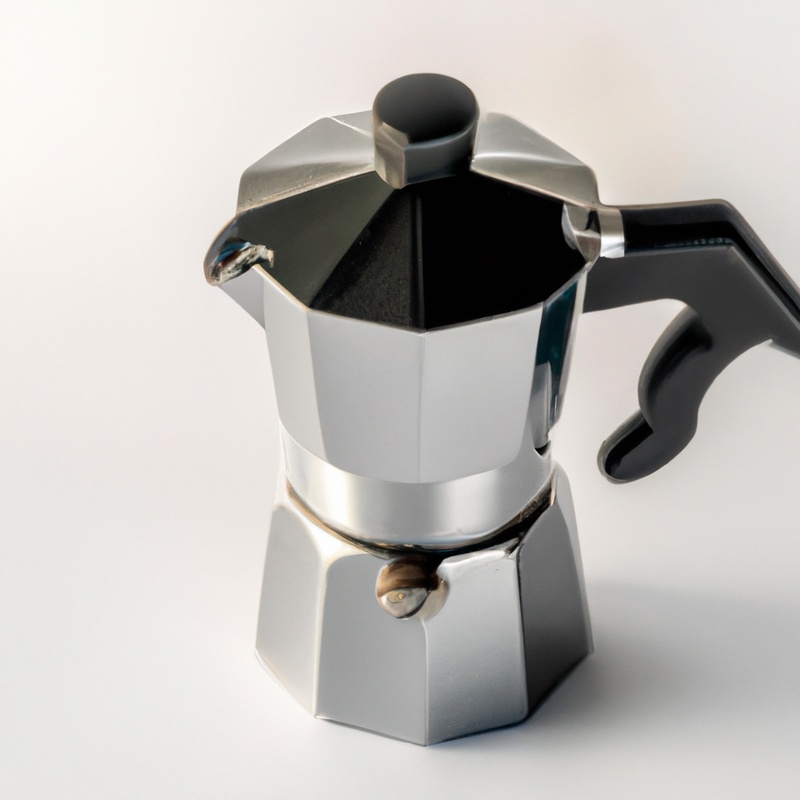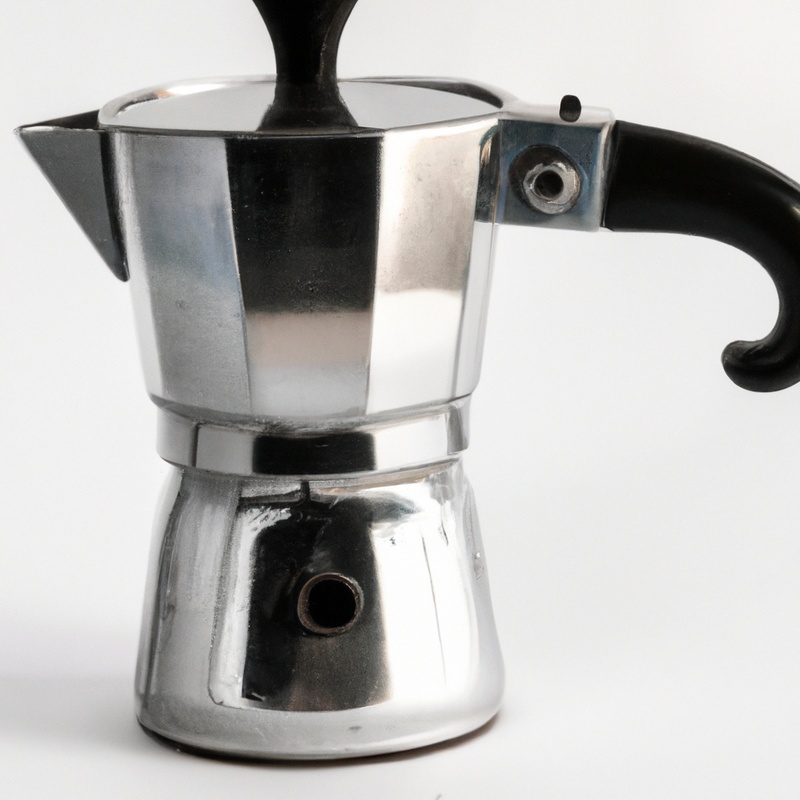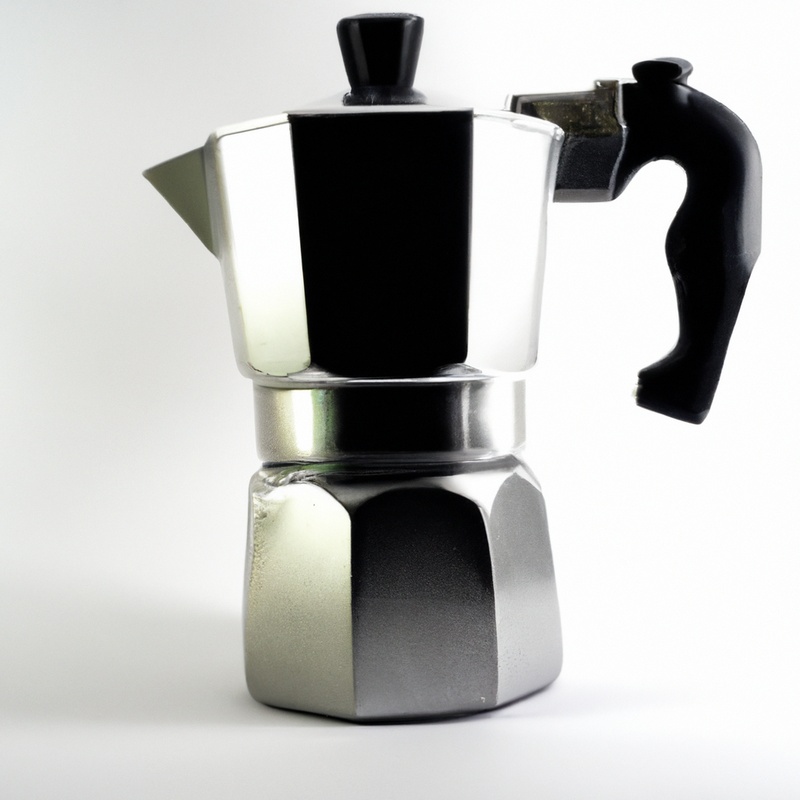Key Takeaways:
- Stovetop espresso makers are designed for hot water extraction, making them unsuitable for traditional cold brewing.
- Cold brewing requires a longer steeping time and a different extraction method than stovetop espresso making.
- Opt for a dedicated cold brew coffee maker or a different alternative if you prefer cold brew coffee over espresso.
Are you a coffee lover who enjoys experimenting with different brewing methods? If so, you might be wondering if your trusty stovetop espresso maker can also pull off a delicious batch of cold brew.
Well, I’m here to spill the beans on this versatile little gadget.
In this article, we’ll dive into the world of stovetop espresso makers, understand how they work, and explore the pros and cons of using them for cold brew. So, grab your favorite mug and let’s find out if your stovetop espresso maker is up for the chilly challenge!
| Stovetop Espresso Maker | Cold Brew |
| Method | Traditional brewing method using heat |
| Brewing Time | Quick, usually takes a few minutes |
| Temperature | Hot water is used to extract coffee flavor |
| Strength | Concentrated and bold flavor |
| Acidity | Can be high due to the extraction method |
| Recommended for | Those who prefer strong, robust coffee |
| Pairing | Milk-based drinks, espresso-based cocktails |
| Preparation Time | Short |
| Cold Brew | Method |
| Slow steeping process, no heat used | |
| Coffee grounds are steeped in cold or room temperature water for an extended period of time | |
| Usually brewed for 12-24 hours | |
| Temperature | |
| Uses cold or room temperature water, no heat involved | |
| Strength | |
| Milder, smoother flavor | |
| Low acidity | |
| Recommended for | |
| Those who prefer a less bold, smoother coffee | |
| Pairing | |
| Iced coffee, milk-based drinks | |
| Preparation Time | |
| Long |
What is a stovetop espresso maker?
A stovetop espresso maker is a simple and compact device used to brew espresso on the stovetop.
How does a stovetop espresso maker work?
A stovetop espresso maker works by using steam pressure to force hot water through ground coffee. Here’s how it works:
- Add water: Fill the bottom chamber of the espresso maker with water.
- Add coffee: Place finely ground coffee into the middle chamber, making sure to distribute it evenly.
- Assemble: Screw the top chamber onto the bottom chamber, ensuring a tight seal.
- Heat: Place the espresso maker on a stove burner over medium heat.
- Brew: As the water heats up, it creates steam pressure that forces the hot water through the coffee grounds and into the top chamber.
- Serve: Once the brewing is complete, remove the espresso maker from the heat and pour the brewed espresso into cups.
That’s it! It’s a simple and efficient way to make espresso right on your stovetop. Enjoy your flavorful cup of coffee!
Pros and cons of using a stovetop espresso maker
Using a stovetop espresso maker has its pros and cons.
On the positive side, a stovetop espresso maker is compact and doesn’t require electricity, making it convenient for travel or small kitchens.
It also produces strong, flavorful coffee.
However, the process can be a bit finicky and require some trial and error.
Additionally, it may not produce the same level of crema or the smoothness of a traditional espresso machine.
Consider your priorities and preferences before deciding whether a stovetop espresso maker is right for you.
What is cold brew coffee?
Cold brew coffee is a brewing method where coffee grounds are steeped in cold water for an extended period of time, resulting in a smooth and less acidic coffee concentrate.
How is cold brew coffee different from regular coffee?
Cold brew coffee is different from regular coffee in several ways.
First, it is made by steeping ground coffee in cold or room temperature water for an extended period, usually 12 to 24 hours.
This slow process extracts flavors differently, resulting in a smoother, less acidic taste.
Additionally, cold brew is typically served over ice or mixed with milk, making it a refreshing and milder option compared to hot brewed coffee.
Lastly, it has a longer shelf life and can be stored in the refrigerator for up to a week.

Benefits of cold brew coffee
When it comes to cold brew coffee, there are several benefits that make it a popular choice among coffee enthusiasts. Here are some of the key advantages:
- Smooth and less acidic: Cold brewing extracts flavors from coffee beans slowly, resulting in a smoother and less acidic taste compared to traditional hot brewing methods.
- Less bitter: The lower temperature of cold brewing reduces the release of bitter compounds, giving cold brew coffee a more mellow and enjoyable flavor profile.
- Concentrated and versatile: Cold brew coffee is typically made in a concentrated form, which allows you to dilute it according to your preferences. It can be enjoyed on its own, as an iced coffee, or used as a base for other coffee-based beverages.
- Lower in caffeine: The longer brewing process of cold brew coffee leads to a lower caffeine content compared to hot brewed coffee. This makes it a suitable choice for those who are sensitive to caffeine or prefer a less stimulating drink.
- Longer shelf life: Due to its low acidity, cold brew coffee has a longer shelf life than hot brewed coffee. You can store it in the refrigerator for a few days without compromising its taste or quality.
So, if you’re looking for a refreshing and flavorful coffee experience with less acidity and bitterness, cold brew coffee might just be the perfect choice for you. Give it a try and discover the unique benefits it has to offer!
Can you use a stovetop espresso maker for cold brew?
A stovetop espresso maker is not the ideal tool for making cold brew due to its design and brewing method.
Why a stovetop espresso maker may not be the best choice for cold brew
A stovetop espresso maker may not be the best choice for cold brew for a few reasons.
Firstly, stovetop espresso makers are designed to produce high-pressure, hot water, which is not ideal for the cold brew process.
Cold brew requires a much longer brewing time at room temperature or in the refrigerator.
Secondly, stovetop espresso makers typically have small capacities, making it difficult to brew large batches of cold brew.
Lastly, stovetop espresso makers can be quite expensive, and there are more affordable and specialized options available for making cold brew.
Alternative methods for making cold brew at home
Sure! Here are some alternative methods for making cold brew at home:
- The immersion method: Simply combine coarsely ground coffee and water in a container, let it steep for 12-24 hours, then strain out the coffee grounds.
- The cold drip method: Use a slow-drip device or a DIY setup to slowly add water to coffee grounds over several hours, which gradually extracts the flavors.
- The French press method: Add coarsely ground coffee and water to a French press, let it steep overnight, then press the plunger down to separate the grounds from the brew.
- The mason jar method: Place coffee grounds and water in a sealed mason jar, shake it well to ensure even extraction, and refrigerate overnight before straining.
Experiment with these methods to find your preferred cold brew style!
How to make cold brew coffee at home
Make delicious cold brew coffee at home with these simple methods.
Method 1: Traditional cold brew coffee
To make traditional cold brew coffee, you’ll need coarsely ground coffee and cold water. Combine the coffee and water in a jar or container, using a ratio of 1 part coffee to 4 parts water.
Stir well to ensure all the coffee is saturated.
Then, cover the jar and let it steep in the refrigerator for 12-24 hours. After steeping, strain the mixture through a coffee filter or cheesecloth to remove the grounds.
Dilute the cold brew with water or milk to taste, and enjoy it over ice or chilled.
Method 2: Cold brew coffee using a French press
To make cold brew coffee using a French press, start by adding coarsely ground coffee to the carafe.
Use a ratio of 1 part coffee to 4 parts cold water.
Stir it gently to ensure all the coffee grounds are saturated.
Let it steep in the fridge for 12-24 hours, depending on your preference for strength.
After steeping, press the plunger down slowly to separate the coffee grounds from the liquid.
Pour the cold brew into a separate container and store it in the fridge.
Dilute with water or milk when serving, according to taste.
Enjoy your homemade cold brew coffee!
Method 3: Immersion cold brew coffee
Method 3: Immersion cold brew coffee is a simple and effective way to make cold brew at home. Here’s how to do it:
- Coarsely grind your coffee beans.
- Combine the coffee grounds and cold water in a container.
- Stir gently to ensure all the grounds are saturated.
- Cover the container and let it steep in the refrigerator for 12-24 hours.
- After steeping, strain the coffee using a fine-mesh sieve or a coffee filter.
- Dilute the concentrate with water or milk to taste.
- Enjoy your smooth and flavorful immersion cold brew coffee!
Frequently Asked Questions about stovetop espresso makers and cold brew coffee
Can I use a stovetop espresso maker for regular brewed coffee?
Yes, you can use a stovetop espresso maker for regular brewed coffee! Simply follow these steps:
- Grind your coffee beans to a medium-coarse consistency.
- Fill the bottom chamber of the stovetop espresso maker with water.
- Place the filter basket on top and fill it with the ground coffee.
- Screw on the top chamber securely and place the pot on the stove over low to medium heat.
- Wait for the water to boil and the coffee to percolate into the top chamber.
- Once the top chamber is filled with coffee, remove the pot from the heat.
- Allow the coffee to cool for a few minutes before pouring and enjoying your brewed coffee!

Can I make hot espresso with a stovetop espresso maker?
Yes, you can make hot espresso with a stovetop espresso maker. It’s a popular and simple method of brewing espresso at home.
Just fill the bottom chamber with water, add finely ground coffee to the middle section, and screw the top part tightly.
Place it on the stove, and the heat will create pressure, forcing the water through the coffee grounds, producing a rich and flavorful espresso. Enjoy!
What other equipment do I need for making cold brew coffee?
To make cold brew coffee, the main equipment you will need is a cold brew coffee maker or a large pitcher.
Other essential equipment includes a coffee grinder (if you prefer to grind your own beans), a fine mesh sieve or cheesecloth for straining the coffee grounds, and a container or bottle for storing the cold brew in the refrigerator.
Optional accessories include a scale for measuring the coffee and water, a stirrer or spoon for mixing, and a sealable lid for the pitcher or container to keep the cold brew fresh.
Final Verdict
While a stovetop espresso maker may not be the ideal choice for cold brew coffee, there are alternative methods that can yield excellent results. Cold brew coffee offers unique flavor profiles and benefits, such as lower acidity and a smooth, mellow taste.
By using a traditional cold brew method, a French press, or immersion cold brewing, you can easily make cold brew coffee at home without the need for a stovetop espresso maker.
Remember to experiment with ratios and brewing times to find your perfect cup of cold brew. Happy brewing!
